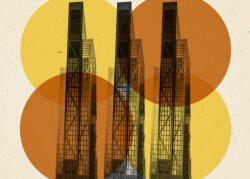Luxury real estate kicked off a record-breaking surge around the start of the pandemic, but its run recently hit a snag.
Sales in the luxury market dropped 17.8 percent in the three-month period ending April 30, according to a report from Redfin. In this case, luxury homes are defined as those in the top five percent based on market value.
The sales decline was the third-largest to hit the luxury market in the past decade. The largest came in the three-month period ending on June 30, 2020, when sales dropped 23.6 percent.
Last year, sales increased by as much as 80 percent year over year in the luxury market, so the sector has essentially done an about face since then.
The report cited rising mortgage rates, the factor seemingly at the forefront of every recent housing question, as part of the decline in sales. The average 30-year fixed mortgage rate was 5.23 percent for the week ending June 9, hovering close to the year’s 5.3 percent peak. The rate for a 30-year jumbo loan, typically utilized by luxury borrowers, is also up to 5.06 percent.

Redfin’s Elena Fleck (Source: Redfin)
The slumping stock market is also a factor, according to Redfin real estate agent Elena Fleck, as that could impact many buyers in the luxury market.
“The good news for buyers is the market is becoming more balanced and competition is easing up,” Fleck said in the report.
To that end, the rate of price growth in the luxury market is beginning to flatten. For the three months, the median price jumped 19.8 percent year over year to $1.15 million. That’s well above the growth rate pre-pandemic, but below the 27.5 percent rise from last spring.
Read more


Additionally, the inventory crunch is easing. The supply of homes dropped 12.4 percent year over year, a significantly smaller decline than the record 24.6 percent drop from last summer. Luxury listings, meanwhile, increased 1.1 percent year over year, the first increase in the market since the three months ending in July.
Among the top 50 metros analyzed, Long Island’s Nassau County saw the biggest drop in luxury home sales, down 45.3 percent. Interestingly, neighboring New York City was the only metro with a rise in luxury sales, up 30 percent. New York also saw the second-biggest gain in listings at 31.1 percent, only trailing Warren, Michigan.
Other metros to see a major decline in luxury home sales include Oakland (35.1 percent), Dallas (33.8 percent), Austin (33 percent) and West Palm Beach (32.8 percent).
The median sales price of luxury homes rose in all 50 markets, led by a 33 percent gain in Tampa, Florida. The smallest price climb was the 5.5 percent increase in St. Louis.
Luxury listings plummeted across California. The five metros to see the largest luxury listing drops were all in the state, led by a 28.4 percent decline in Oakland. Listings also dropped 27.6 percent in Los Angeles and 24.9 percent in San Francisco.
Los Angeles also saw the second-biggest decline in the supply of luxury homes, down 36.1 percent. Miami was right behind Los Angeles with a 33.7 percent decline in supply.
